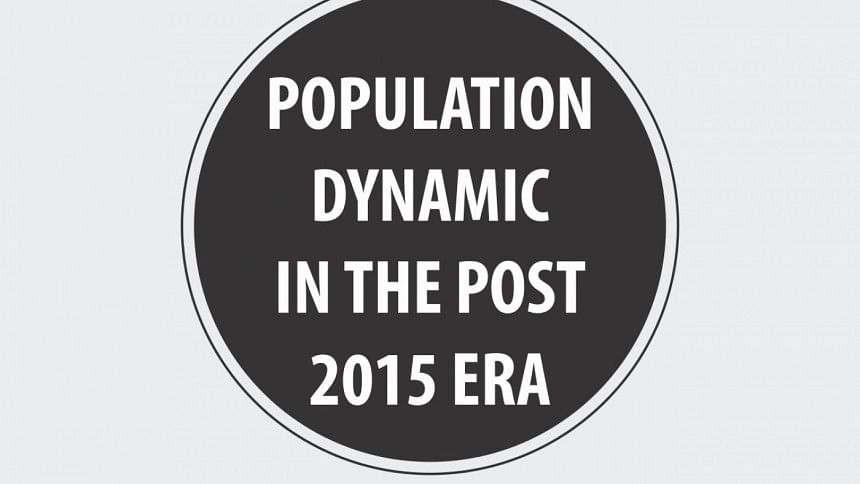Moving into the post-2015 era – How global agreements will guide us

Sendai Framework for Disaster Risk Reduction
The first framework to be agreed upon as part of the post-2015 era the goal in Sendai was to finalize the post-2015 global framework on disaster risk reduction, ten years after the Hyogo Framework for Action was created to make the world safer from natural hazards. It lays out seven goals and four priority areas of action. It is a 15-year, voluntary, non-binding agreement which recognizes that the State has the primary role to reduce disaster risk but that responsibility should be shared with other stakeholders including local government, the private sector and other stakeholders. The central goal is to substantially reduce disaster risk and the loss of lives, livelihoods and health. The seven global targets aim to reduce global disaster mortality, reduce the number of affected people globally, reduce economic losses, reduce loss to infrastructure and the disruption of basic services, such as health and education, encourage countries to adopt national and local disaster risk reduction strategies and enhance international cooperation and the availability and accessibility of hazard warnings.
Disaster risk reduction is a key pillar of UNFPA's work globally, including across Asia and the Pacific, the region most prone to natural disasters.
In recent years, UNFPA's interventions have provided crucial support to pregnant and lactating women -- ensuring safe child-birth and neonatal care, and saving lives -- as well as helping prevent gender-based violence in the wake of crises. Women and young people also play a leading role in helping communities respond more effectively to disasters, and are the very backbone of a stronger society.
Agenda 2030 – The Global Sustainable Development Goals
The new Sustainable Development Agenda is a landmark agreement that can propel us toward a more sustainable world, a world without poverty. It is an ambitious agenda that goes much further than anything before and aims to finish what the MDGs did not achieve. The 17 goals and 169 targets are comprehensive, with the eliminiaton of poverty at the centre but covering economic growth, social development and environmental protection. More importantly it is a people-centred agenda, it is about improving people'slives. Goals have been established to ensure a healthy life for all, gender equality and more equity across the world. It also calls for more quality education and takes into account new challenges such as rapid urbanization.
Addis Ababa – Third Conference on Financing for Development
The architecture of the development agenda and how it will be financed has changed. The conference held in Addis Ababa made it clear that the mobilization and efficient use of domestic resources for development is becoming increasingly important. New partnerships and innovative financing, together with the private sector will be needed to continue to promote reproductive health and family planning. Besides the efficient management of resources connectivity between countries, in the form of south-south cooperation and technology transfer will play a key role.
The private sector in the future will be called upon to incorporate issues related to social and human development into their work. Innovative approaches for example to family planning could be developed jointly with the private sector.
The Addis Ababa conference also saw the launch of the Global Financing Facility. This will provide countries with an opportunity to mobilize resources they need for example for reproductive health, maternal health, newborn health and adolescent health.
COP 21 Paris Climate Change Conference
The COP 21 resolution is only a few days old, but it is being celebrated as a great achievement. An agreement was reached to curb CO2 emissions. What does this mean for population dynamics?
Many people believe slowing population growth in the world's high-fertility countries could help reduce global emissions. Yet these countries, currently have very low emissions, while countries with slower population growth – namely, wealthier countries – have much higher emissions. Solving climate change requires education, innovation and empowerment.
Climate change threatens the livelihoods and well-being of all people and societies. Yet the impacts of climate change will likely be worse for the poor and marginalized, who have contributed little to greenhouse gas emissions but who lack the resources to effectively adapt as droughts, floods and other consequences take effect.And because climate change affects ecosystems and agriculture, many of the negative effects will disproportionately burden poor women, who bear the responsibilities of food production and water collection in many parts of the world.Reaching a globally binding agreement is therefore nowhere more important than when it comes to dealing with climate change. For Bangladesh, a country which will have to endure the effects of climate change the COP 21 could be a first step in the right direction.
UNFPA's work on sexual and reproductive health, education, and violence prevention helps promote resilience among vulnerable populations. Access to voluntary family planning, maternal health care and quality education are key ways to empower vulnerable women and young people, making them better equipped to prepare for and respond to climate-related crises.
UNFPA also helps address the effects of climate change, especially the humanitarian consequences. Climate change increases the magnitude and frequency of natural disasters. In these crises, women and girls often lose access to vital health services, including sexual and reproductive health care, and they face a heightened risk of gender-based violence. UNFPA provides critical sexual and reproductive health services, raises awareness of the increased risks, and provides psychosocial support to survivors of violence.

 For all latest news, follow The Daily Star's Google News channel.
For all latest news, follow The Daily Star's Google News channel. 



Comments